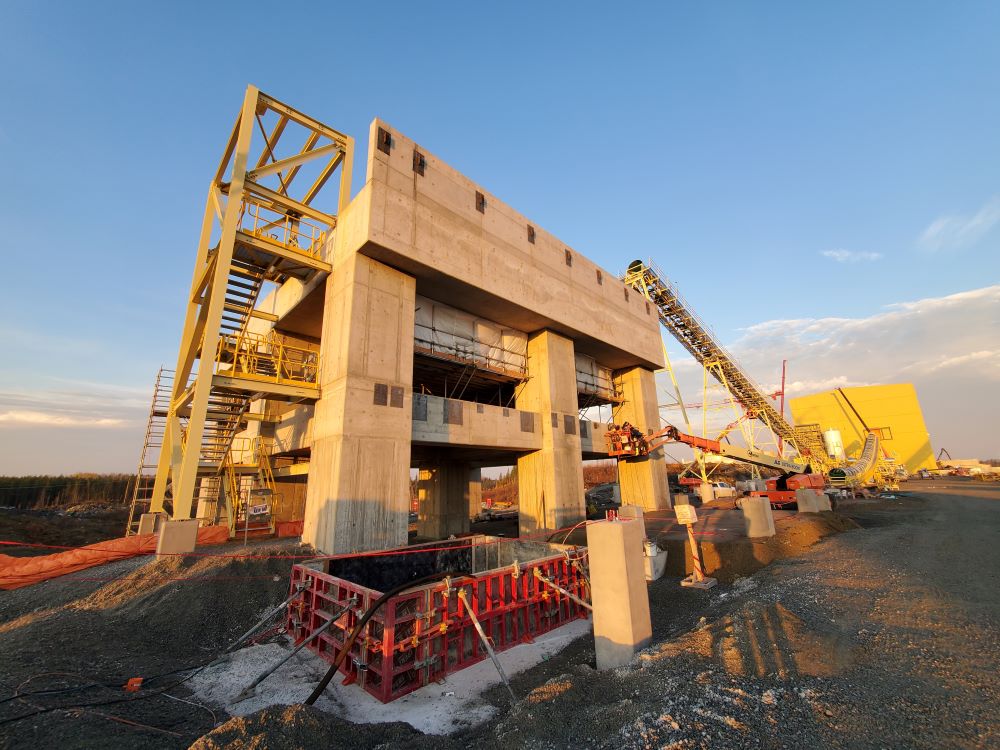Scope
FPrimeC was engaged by Aecon to estimate the in-place concrete strength for a massive concrete structure in a gold mine construction in Northern Ontario. Due to complex reinforcement configuration, the concrete was not consolidated properly. The complex geometry of the silo bin, and embedded steel plates was another challenge in the quality assurance and strength evaluation. The main objective was to minimize the number of cores through implementation of an innovative non-destructive testing and evaluation procedure.

Methodology for In-Place Estimate of Concrete Strength
The methodology involved evaluating the quality and integrity of concrete elements at select locations through non-destructive testing. Digital Rebound Hammer and Customized Ultrasonic Pulse Velocity Method (with exponential transducers) were used to verify the integrity and quality of concrete.
1- Digital Rebound Hammer
Rebound Hammer was used to rapidly collect RN values across a large test area. Moreover, such hammer enabled FPrimeC engineers to correct the RN values for the slightest variations in the orientation of the Hammer (variation from Gravity direction).

2- Ultrasonic Pulse Testing with Exponential Transducers
The honeycombed concrete on the top and bottom of (originally 2 meter thick) concrete element was removed. However, the surface of the remaining concrete was not ideal for placement of standard UPV transducers. Therefore, exponential transducers were used to reduce the negative impact of surface condition.

3- Mathematical Modeling
Different mathematical modeling techniques based on empirical and in-situ results were developed to estimated the strength distribution along the test area. Results from the UPV method and Rebound Hammer were combined in bi-exponential models to predict concrete strength. To further validate the findings of this investigation, a limited number of concrete cores were extracted from the good locations and locations with poor quality. Project-specific relationship between rebound numbers and concrete strengths were developed and used as the basis of estimating the concrete strength.
